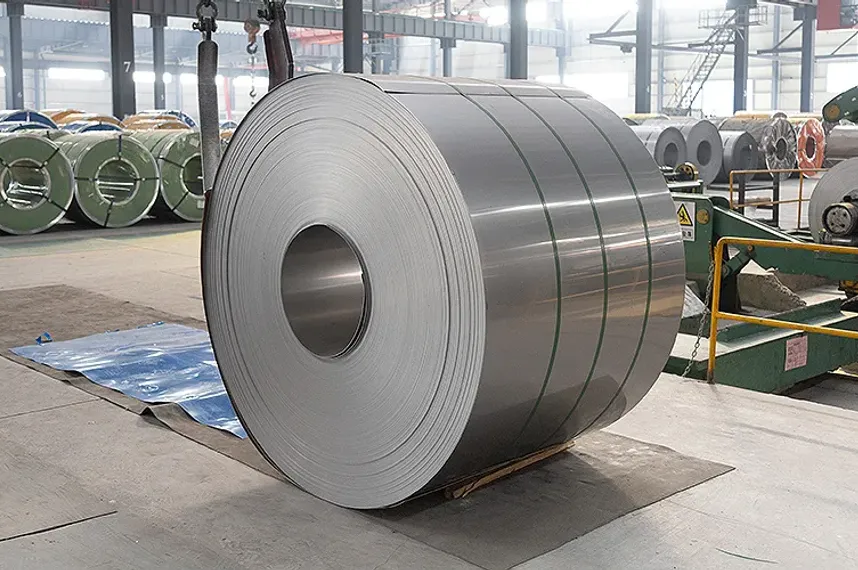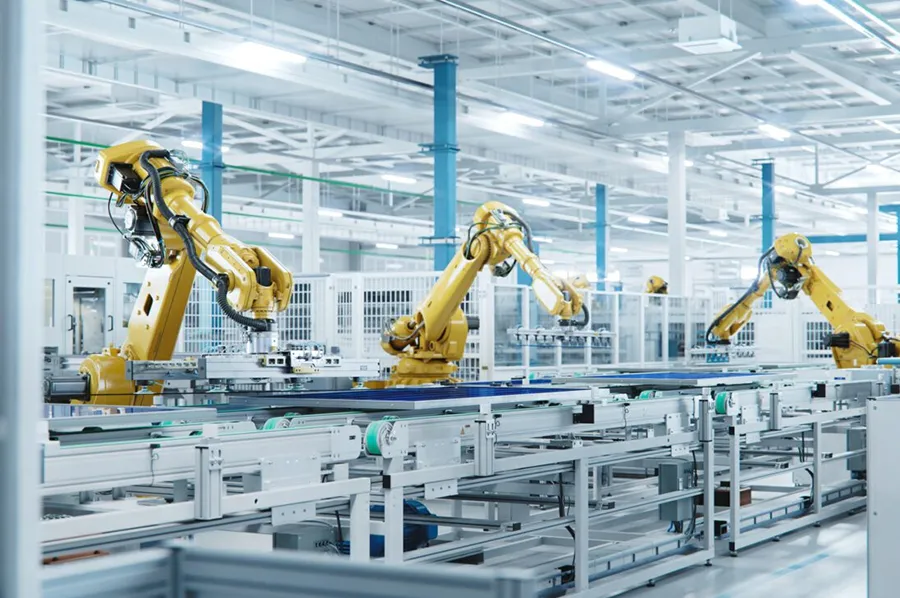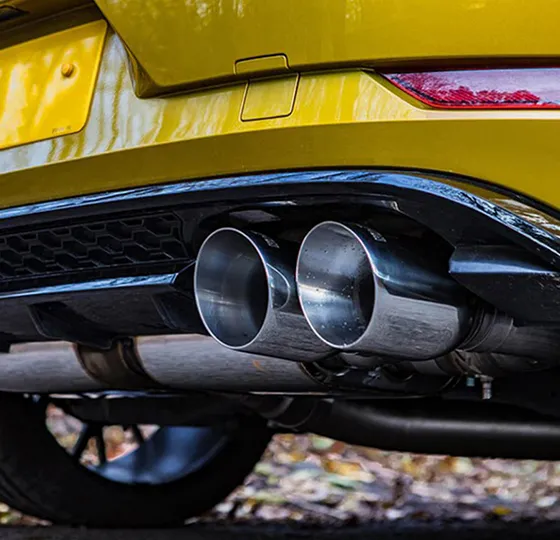Facing uncertainty about which metals to choose for your industrial projects?
Many businesses struggle with rust, weak steel, or regulatory demands—leading to costly replacements and downtime. But switching to the right stainless steel coil can solve these problems, ensuring your operations run smoothly and safely.
Stainless steel coils are versatile metal products used in a variety of industries, including automotive, food and beverage, construction, and manufacturing.
These coils are valued for their corrosion resistance, strength, and adaptability, making them essential for producing appliances, structural components, food processing equipment, and more.
A bobina de acero inoxidable is a continuous sheet of stainless steel that has been rolled into a cylindrical form for easy transportation, storage, and fabrication. Coils are available in various widths, thicknesses, and finishes, including the popular 304 and 316 alloys.
This form of stainless steel is widely used because it can be cut to size, welded, and shaped for a variety of applications across industries. Stainless steel’s combination of metals—primarily iron and chromium, sometimes with nickel and other elements—ensures a popular choice for both strength and corrosion resistance.
Table: Key Grades and Types of Stainless Steel Coil
| Grade | Key Properties | Common Uses |
|---|---|---|
| 304 | General purpose, corrosion resistance | Food industry, appliances |
| 316 | High corrosion resistance, marine | Chemical, marine, food |
| 430 | Ferritic, magnetic, affordable | Automotive, home equipment |
| Duplex | High strength & corrosion resistance | Marine, industrial tanks |

What Is a Stainless Steel Coil?
When it comes to industrial materials, bobina de acero inoxidable stands out for its corrosion resistance, durability, and versatility.
Unlike carbon steel or cast iron, stainless steel helps reduce maintenance costs and withstand exposure to moisture, harsh chemicals, and high temperatures. For many companies, especially in food and beverage or marine sectors, this means fewer shutdowns and a longer lifespan for equipment.
Key advantages of stainless steel coils:
Bullet List: Why Industries Use Stainless Steel Coils
Fact Box: Stainless Steel Coil Market
Stainless steel coils are used in a wide range of applications across various industries, thanks to their resistance to corrosion, strength, and ease of fabrication.
Steel coils are widely used to produce:
| Industry | Typical Applications | Key Requirements | Popular Grades |
|---|---|---|---|
| Food & Beverage | Food processing equipment, storage tanks, conveyors | Food safety, corrosion resistance | 304, 316 |
| Construcción | Roofing, wall cladding, beams, handrails | Weatherability, structural strength | 304, 430 |
| Automotive/Transport | Exhaust, trims, structural components, heat shields | Heat resistance, weldability | 409, 304, 316 |
| Appliances | Ovens, refrigerators, dishwashers, kitchen panels | Appearance, hygiene, fabrication | 304, 430 |
| Chemical & Marine | Tanks, piping, marine hardware | High corrosion resistance, strength | 316, duplex |
| Manufacturing | Drums, barrels, plates, pipes | Durability, flexibility | 304, 316, 430 |
“Stainless steel coils are widely recognized as the foundation of modern manufacturing and infrastructure due to their combination of strength and corrosion resistance.”
— China Stainless Steel Association

Applications of Stainless Steel Coils
En food industry relies heavily on stainless steel coils for its processing equipment, storage tanks, and work surfaces. The reason is simple:
Stainless steel’s resistance to corrosion, smooth non-porous surface, and ability to withstand high temperatures ensure food safety and long-term durability.
Food safety standards require that all surfaces in direct contact with food or beverages are both hygienic and resistant to corrosion, acids, and cleaning chemicals. This makes 304 and 316 stainless steel coils the preferred materials for the industry.
Case Study:
A leading beverage manufacturer in Southeast Asia upgraded their entire production line using 316 stainless steel coils from a Chinese supplier. The new tanks and conveyor lines saw a 30% reduction in maintenance downtime and improved food safety compliance, thanks to stainless steel’s excellent resistance to corrosion.
En construction industry is another major consumer of stainless steel coils, especially for projects demanding durability, weather resistance, and aesthetic appeal.
Stainless steel coils are used in:
Stainless steel’s ability to withstand exposure to moisture, pollutants, and extreme weather makes it an ideal choice for both exterior and interior applications. For modern architects, the combination of strength, durability, and ease of fabrication provides almost unlimited design possibilities.
Fact:
In 2023, more than 30% of new commercial buildings in China and Southeast Asia used stainless steel coil as a major component in roofing and exterior cladding.
In the automotive industry, stainless steel coils are widely used in manufacturing:
Automotive parts made from stainless steel coils, such as exhaust system tubes, benefit from both strength and resistance to corrosion. With growing demand for lightweight but durable vehicles, stainless steel is increasingly used for both traditional and electric vehicle parts.

automotive stainless steel coil
Industry Insight:
Steel coils are used in the production of next-generation electric vehicle battery casings because of their combination of mechanical strength and corrosion resistance.
Kitchen appliances such as ovens, dishwashers, refrigerators, and even commercial coffee machines all use stainless steel coil. The material is chosen for its clean appearance, food safety, and ability to withstand hot and cold cycles.
In marine and chemical environments, 316 stainless steel coil is a favorite for its high resistance to saltwater and corrosive chemicals. Coils are used to produce marine hardware, storage tanks, piping, and other critical components.
While cast iron cookware is popular for some cooking styles, stainless steel coil is preferred in commercial kitchens for its hygienic qualities and ease of cleaning.
| Acabado superficial | Features | Typical Use Cases | Visual Appearance |
|---|---|---|---|
| 2B | Smooth, matte | Food processing, appliances, chemical tanks | Dull gray |
| BA | Bright, reflective | Kitchenware, architectural panels, appliances | Mirror-like |
| No.1 | Rough, hot-rolled | Industrial tanks, marine parts, pressure vessels | Scaly, matte |
| No.4 | Brushed, decorative | Elevator panels, kitchen appliances, wall cladding | Silky, matte |
Available in a variety of grades, stainless steel coil can be cut to size, welded, and formed to match your needs.
One of the main reasons why stainless steel coil is a popular choice is its ease of fabrication:
OEM/ODM manufacturers rely on custom-cut stainless steel coil for producing unique or specialized steel products.
Stainless steel coils are typically shipped in cylindrical form and require careful packaging to prevent surface damage or corrosion.
Proper transportation and storage help maintain the resistance to corrosion and appearance of high-quality stainless steel coils, which is essential for many industries, especially food and beverage or export markets.
Pro Tip:
If you are sourcing stainless steel coil internationally, ask your supplier about their standard packaging methods and whether they comply with ISO or SGS export requirements.
Selecting a reliable stainless steel coil supplier is critical for any industrial distributor, contractor, or OEM. With so many suppliers in China and worldwide, it’s important to evaluate not just price, but also quality, service, and the ability to provide customized solutions.
Checklist: What Makes a Good Supplier?
Industry Insight:
“A long-term relationship with a reputable stainless steel coil supplier not only guarantees consistent quality and supply, but also helps clients respond quickly to new project requirements and market changes.”
— China Stainless Steel Industry Expert
Case Study:
An engineering contractor in Europe required high-quality stainless steel coils for a new metro infrastructure project. After switching to a Chinese manufacturer offering SGS-certified 304 coils and rapid custom cutting, the contractor reduced both project lead times and material costs by 15%, with zero reported quality issues after one year of operation.
What is the difference between hot-rolled and cold-rolled stainless steel coil?
Hot-rolled coils are thicker and have a rougher surface, ideal for structural and heavy-duty uses. Cold-rolled coils are thinner, with a smooth finish, perfect for appliances, food equipment, and visible surfaces.
How do I know which grade of stainless steel coil to use?
304 is best for general use and food safety; 316 offers extra corrosion resistance for marine and chemical applications; duplex grades combine high strength and corrosion resistance for the most demanding uses.
Are stainless steel coils suitable for high-pressure or high-temperature environments?
Yes, stainless steel coils are engineered to withstand high pressure and temperature, making them a reliable choice for exhaust systems, pressure vessels, and power plant applications.
Why is stainless steel preferred in food and beverage processing?
It’s non-porous, corrosion-resistant, and easy to sanitize, meeting strict food safety requirements. It also resists acids, salts, and cleaning chemicals used in processing plants.
Can I order custom widths, thicknesses, or finishes for my project?
Absolutely. Most leading manufacturers and exporters in China offer custom cutting, width, thickness, grade, and finish to meet any project need.
What certifications should I look for in a stainless steel coil supplier?
Look for ISO 9001 for quality management, SGS or TUV for material inspection, and export-related certifications for international shipments.
How should stainless steel coils be stored to prevent corrosion?
Store in a dry, well-ventilated area away from moisture and chemicals, and keep coils wrapped until use.
A Simple Guide to the Stainless Steel Coil Lifecycle
graph TD
A[Raw Materials: Iron, Chromium, Alloy Elements] --> B[Melting and Refining]
B --> C[Hot Rolling (No.1 Finish)]
C --> D[Pickling and Cleaning]
D --> E[Cold Rolling (2B/BA/No.4 Finish)]
E --> F[Annealing and Surface Finishing]
F --> G[Cut to Size, Weld, Fabricate]
G --> H[Packing, Transportation, Storage]
H --> I[Final Use in Industry]
Ready to source or customize stainless steel coil for your next project?
Contact us for expert guidance, competitive factory pricing, and worldwide shipping.
¿Cuáles son las calidades de los tubos de acero inoxidable sin soldadura? | Guía definitiva sobre las calidades de los tubos de acero inoxidable sin soldadura
Guía de bobinas de acero inoxidable: Metal de soldadura para tubos de acero para alimentación y bebidas
¿Qué es un tubo de acero inoxidable sin soldadura? Guía completa sobre tubos de acero inoxidable, soldadura vs. sin soldadura y aplicaciones industriales